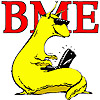
|
| SoE home |

|
| Kevin Karplus's home page |

|
| Biomolecular Engineering Department |
This assignment is required for both BME 200 and BME 205, but those who are taking both courses need only turn it in once (for BME 205) to get credit for it in both courses.
Your task is simple: find a graduate fellowship that you are eligible for and fill out all the application materials. For this assignment you need not actually submit the application (though we strongly urge all students to do so).
There is a fairly good list of fellowship opportunities at http://www.cbse.ucsc.edu/education/grad_fellowships
There is also some information on graduate-student funding in the UCSC catalog http://registrar.ucsc.edu/catalog/grad-studies/index.html#FinancSupport, though many of these fellowships are ones that you apply for when you apply for admission to UCSC, so current grad students are generally not eligible.
On 16 Oct 2009, I received several files from Graduate Studies that were distributed by the Ford Foundation as advice to fellowship applicants:When I was a grad student, I had an NSF grad fellowship and a Fannie and John Hertz Foundation fellowship (not at the same time). I've also done some reviewing for NSF fellowships and for NIH post doc proposals. I believe that this experience will be useful in providing good feedback on your applications. The students that we accepted into the UCSC bioinformatics PhD program all had very strong records—all should have an excellent chance at getting a fellowship. Our undergrads are more mixed in abilities, but those who finish the program with decent grades should also be quite competitive. Note: there is always some randomness in any selection process, so you are better off applying for several fellowships, rather than just one.
For the foreign students, finding a funding source may be more difficult, as most of the US universities only keep track of domestic funding sources. You should try to find a funding source for which you can apply—either a private foundation that does not have US residency requirement or a source from your country of citizenship. You might want to investigate http://www.edupass.org/finaid/, http://www.edupass.org/finaid/databases.phtml, and http://www.iefa.org. If you cannot find a funding source you are eligible for, then you must give me a list of at least 40 funding sources that you examined and do a dummy application for NSF or NIH.
For the re-entry students, particularly those with doctoral degrees already, you may not be eligible for some of the standard grad student fellowships, since they want to avoid funding perpetual students. If you are changing fields drastically, you may be eligible for standard fellowships, but be held to stricter criteria. You may, if you wish, write an application for a postdoctoral fellowship, which is longer and requires a more detailed research plan.
Those who already have fellowships should share the secrets of their success with others in the class. They should also turn in the technical part of postdoctoral fellowship application or grant proposal (that is, a research plan) or a real grant application. (One year a student turned in a proposal for an equipment grant from Hewlett-Packard, which was subsequently funded.)
A good fellowship applicant must be well-prepared for the graduate program they are proposing entering. Good GRE scores and grades are also useful, but almost everyone applying for a fellowship has at least decent scores, so you won't stand out just on test scores. Having undergraduate research experience, particularly experience that resulted in publication, is a strong plus. The research experience need not be exactly in the field you plan for grad school—for a bioinformatics proposal, research in any of biology, chemistry, computer science, math, statistics, or biophysics would be quite relevant.
A specific research plan is also a plus. Seniors in college are not expected to have extremely detailed research plans (they generally don't know enough yet to formulate one), but they should have a pretty clear idea what they want to do. First-year grad students are held to a somewhat higher standard—you're a lot closer to having to pick your thesis topic!
Vague statements about winning the war on cancer or how exciting bioinformatics is are pretty useless. There is also little point in talking about how you always wanted to be a scientist or how some 6th-grade science teacher turned your life around. What the fellowship reviewers are looking for is evidence that investing in you will have a good payback—that you will become a solid researcher (or doctor or teacher, depending on the fellowship). They want to know what you will do in the future, and they want to know enough about your past to be convinced you can do it.
Letters of recommendation, particularly from researchers who have worked with you closely, are extremely important for a real application. Real letters will not be required for this assignment, since the labor of creating them should not be imposed without reason.
Quite often, the way to get a good letter of recommendation is to draft an honest, detailed assessment of the work you did, and to e-mail it to the person you are asking for a letter. If you write the assessment in the third person, they can cut-and-paste it into their letter, editing out anything they disagree with. This saves them a lot of work: looking up your project, remembering what your contribution was, and coming up with descriptions of it. In fact, for all letters of recommendation that I write, I require the student to provide me with such a draft, though I usually edit them pretty strongly.
It is a good idea to write up a quarterly progress report for each research project you work on, so that you have material readily available for such a request.
Write and turn in a one-page draft of the e-mail or letter you would send to request the letter of recommendation. For real applications, with multiple letters of recommendation, you would need to write several different such letters, as it is very suspicious when two recommenders submit identical letters.
This is an example of what not to do in your recommendation letter. It is copied from John Allen Paulos's book A Mathematician Reads the Newspaper (Basic Books 1995, p. 43):
You write to ask me my opinion of X, who has applied for a position in your department. I cannot recommend him too higly nor say enough good things about him. There is no other student of mine with whom I can adequately compare him. His thesis is the sort of work you don't expect to see nowadays and in it he has clearly demonstrated his complete capabilities. The amount of material he knows will surprise you. You will indeed be fortunate if you can get him to work for you.
Fellowship committees, admissions committees, and recruiting committees are used to getting weasel-worded letters like this. The basic rule thumb they use is that if there is a possible negative reading of a sentence, then that is the inteded one. Damning with faint praise is common. Vagueness is interpreted as criticism.
To avoid this problem, make your draft recommendation specific and positive. A sentence like "X did an excellent job of setting up our lab database, taking only a fraction of the time it would have taken us to do it ourselves" is much more valuable than "X is a prompt, diligent worker". Don't be excessive (if the recommender really thinks you are the best person they've ever worked with, they'll add that themselves), but try to get in some positive statements.
I want paper copies of two documents: the application and the request for recommendation. The application should be a readable, stand-alone document. If the application process requires a number of answers to questions, then what you turn in should include the questions, and not just the answers. Turning in a description of the fellowship and its requirements (usually from the website for the fellowship) would help me assess your application in the correct context.
Please be sure that the document you turn in is readable—in the past people have tried printing out web forms, only to find out that the browser they were using could not print the document properly. You should always prepare your answers first with an editor (one with a spell checker!), not directly into a web form, so there should be a text file you can print for this assignment. Fancy formatting is not required, but make sure that your name is right at the beginning of the document.
Note: this deadline is getting close to the real application deadlines. There should just be time to give you feedback before you turn in any real applications.
XXXX is an engaged participant in class, often asking as well as answering questions and illustrating concepts. He as demonstrated excellent understanding of his field in his assignments, showing particular strength in statistics and data analysis. He is a valued member of any team, having worked with a number of his fellow class mates as well as in our labs. He did excellent and timely work, both thorough and diligent. One of his greatest strengths is in a team setting, where he demonstrates leadership qualities and facilitates a productive and focused environment. He has shown excellent promise in the field of bioinformatics and would be an excellent asset to any graduate program or company.
|
|
| BME 205 home page | old BME 205 discussion forum | Fall 2012 BME 205 discussion forum | UCSC Bioinformatics research |
Questions about page content should be directed to
Kevin Karplus
Biomolecular Engineering
University of California, Santa Cruz
Santa Cruz, CA 95064
USA
karplus@soe.ucsc.edu
1-831-459-4250
318 Physical Sciences Building